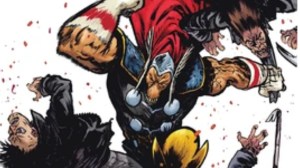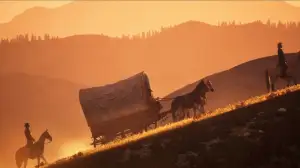This Wednesday, writer John Arcudi and artist Toni Fejzula will take audiences inside of a jail for the ultimate “locked-room” murder case.
Videos by ComicBook.com
“The Jail Crimes Division of the Sheriff’s Office in Mariposa County investigates crimes committed inside county jails,” says the teaser text for Dead Inside, which debuts on Wednesday in comic shops.
“With a limited number of suspects who can’t escape, these are usually easy cases to solve—but not this one. As Detective Linda Caruso gets closer to the heart of the case, she discovers uncomfortable truths about her friends, her job, and herself.”
It’s an intriguing setup and the kind of thing that both comics fans and mystery fans are likely to be buzzing about after they read the first issue — but especially for the artist behind Greg Rucka’s visually bizarre series The Veil, it seems like a kind of boring assignment. Fejzula goes from drawing all kinds of stuff to a 10′ by 10′ cell.
Of course, that’s assuming that the artist get no thrill out of bizarre characters — of which Dead Inside is full to overflowing. And that there’s no appeal to the challenge of the locked-room comic as an artist, just as there is to the writer or the mystery reader.
We spoke with Fejzula about the unique challenges presented by this kind of tale — and here’s what we got in our lightning round with the artist of Dead Inside.

With VEIL, we got a real sense of the scope of your abilities. Is it limiting to dial it down to something like crime comics, where you don’t have as many visually outrageous things, or is it kind of a comfort to be able to focus on craft as much as or more than design?
The fact that Dead Inside is a realistic series makes it more appealing for me to try to find solutions within that limitation. You’re certainly limited at the beginning, but that only causes you to evolve your style in some new unexpected ways, and that’s exciting to me.
My notion of style is that it’s something fluid and changeable. It adapts and finds new ways because each moment of the story is something unique. It’s a kind of a risky approach, but that’s my only way to keep some freshness in the art. I think that freshness is especially good for the reader, as it can keep them intrigued, not only with the plot, but also with the art.
How did you come to partner with Arcudi on this project?
John contacted me five years ago because he saw a blog I created and wanted to say that he loved my work. Since then we’ve been talking about doing something together. I started sending him samples, which he showed to editor Scott Allie, who decided to hire me for Dark Horse in 2012 to work on Veil, with Greg Rucka. After that came the Lobster Johnson: The Glass Mantis one-shot issue written by Arcudi and Mike Mignola. Over a year ago John asked me to work on some new prison crime series, so that was the beginning of Dead Inside.
What’s your working relationship like: do you talk a lot, or is it mostly just in the scripts?
My experience working for Dark Horse is that they are very helpful in the creative process and the result is very beneficial. I love the collaboration, as far as it’s done with common sense, and here it definitely is. My layouts are sometimes revised if there are problems with misunderstanding the story. Daniel Chabon, our editor, weighs in there too. John’s scripts are incredibly well-written, so the best you can do is to be humble and learn because he and Daniel are experienced. Additionally, I also give suggestions to André May, our colorist, who by the way, is spectacular.
What’s the coolest part about the kind of locked-room nature of this project?
The ability to draw in a reduced place. You’re limited in space, but it helps the reader easily know where they are, you can feed them with new image elements and they won’t feel lost. That’s the best part. When I find myself lacking ideas in that kind of research, I recall some old psychological movies, like The Hour of the Wolf by Ingmar Bergman. It’s an incredible display of visual abilities in a reduced place with very few elements. For instance, to analyze the way Bergman plays with lights, shadows, positon of actors and other elements in the frames, using minimal resources, is a great way to learn how to work your panels and make them interesting for a reader without using spectacular supernatural elements.
Were there any unexpected challenges that you encountered working on this?
There are a lot of them, and when I start feeling they’re lacking, I push myself to create new ones. Style must always evolve.








![Simu Liu Confirms The 2 Dream X-Men Shang-Chi Works With On Avengers: Doomsday [Exclusive]](https://comicbook.com/wp-content/uploads/sites/4/2025/12/Simu-Liu-Avengers-Doomsday-interview.jpg?w=300)